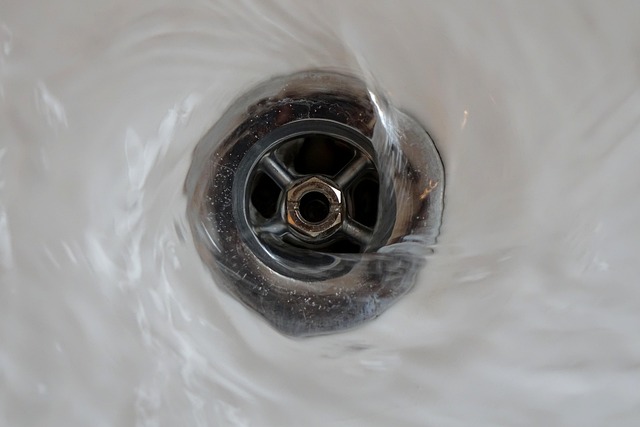In humid bathrooms, choosing slip-resistant flooring is essential for safety, with modern options offering diverse styles while enhancing traction on wet surfaces. Eco-friendly materials like bamboo, cork, and recycled glass tiles balance sustainability with functionality and slip resistance. Installation requires a level subfloor, underlayment, and regular cleaning; maintenance includes sweeping and prompt spill cleanup. These flooring options provide unique aesthetics, durability, and cost-effectiveness for safer, stylish bathrooms.
In the quest for sustainable home solutions, eco-friendly flooring stands out as a game-changer, especially in high-moisture areas like bathrooms. This introduction explores the significance of choosing slip-resistant options that merge style and environmental responsibility. We’ll guide you through popular eco-conscious materials, installation best practices, and real-world applications, empowering you to make an informed decision for your sanctuary. Unlock the benefits of nature-inspired bathroom renovations with these essential insights on slip-resistant eco-friendly flooring.
- Understanding the Importance of Slip-Resistant Bathroom Flooring
- Popular Eco-Friendly Options for Your Bathrooms
- Installation and Maintenance Tips for Longevity
- Real-World Applications and Benefits
Understanding the Importance of Slip-Resistant Bathroom Flooring
In the humid and often slippery environment of a bathroom, choosing the right flooring is paramount to safety and comfort. Slip-resistant bathroom flooring plays a crucial role in preventing accidents and falls, especially for elderly or individuals with reduced mobility. Traditional smooth surfaces can become hazardous when wet, leading to potential injuries. Opting for slip-resistant options ensures a safer space, as these floors are designed with textures or specialized coatings that provide better traction even under damp conditions.
This type of flooring is not just about safety; it also enhances the overall aesthetic and functionality of your bathroom. Modern slip-resistant materials come in various styles, colors, and patterns, allowing for creative design choices while prioritizing practical considerations. From natural stone with etched textures to specialized vinyl with intricate grooves, there are options to suit different tastes and bathroom layouts, ensuring a stylish and secure environment.
Popular Eco-Friendly Options for Your Bathrooms
When it comes to choosing eco-friendly flooring for your bathroom, there are several popular and stylish options that offer both sustainability and functionality. One of the top choices is bamboo flooring, known for its rapid growth rate and natural beauty. Bamboo is durable, water-resistant, and has a unique aesthetic that can complement various bathroom designs. Another sustainable option is cork flooring, which provides excellent insulation, noise reduction, and anti-slip properties – making it an ideal choice for bathrooms where safety and comfort are paramount.
For those seeking a more luxurious feel, natural rubber flooring is both eco-friendly and highly slip-resistant, ensuring safety in wet environments. It’s made from renewable resources and offers exceptional durability. Additionally, recycled glass tiles have gained popularity due to their unique patterns and the fact that they’re made from post-consumer waste, further reducing environmental impact. These options not only contribute to a greener planet but also provide long-lasting, low-maintenance solutions for your bathroom flooring needs, ensuring both style and sustainability.
Installation and Maintenance Tips for Longevity
When installing eco-friendly bathroom flooring, ensure a level subfloor for a smooth finish. Use appropriate underlayment for added comfort and insulation. For slip-resistant bathroom flooring, consider textures or patterns that provide traction, reducing the risk of accidents. Regular cleaning with mild detergents is crucial to maintain the floor’s appearance. Avoid using harsh chemicals which can damage the eco-friendly material. Promptly address any moisture issues, as prolonged exposure to water may compromise the flooring’s integrity. Regular maintenance includes sweeping and vacuuming to remove dirt and debris, preventing microscopic damage. In the case of spills, wipe them up immediately to prevent staining or water seepage.
Real-World Applications and Benefits
In real-world applications, eco-friendly flooring for bathrooms has gained significant traction due to its ability to combine style with sustainability. Materials like bamboo, recycled vinyl, and natural cork not only reduce environmental impact but also offer unique aesthetic appeals that can transform any bathroom into a modern, stylish space. These options are particularly well-suited for high-moisture environments, making them ideal for wet areas such as showers and bathtubs.
One of the notable benefits of eco-friendly bathroom flooring is its slip-resistant nature. Many sustainable materials have naturally gripping textures or can be treated to enhance traction, ensuring safety without compromising on design. This feature is crucial in preventing accidents and falls, especially in damp conditions. Moreover, these floors are often easy to maintain, durable, and cost-effective in the long run, making them a practical choice for homeowners looking to update their bathrooms while minimizing their environmental footprint.
When choosing eco-friendly flooring for your bathroom, opt for materials that offer superior slip-resistant properties to ensure safety and prevent accidents. By selecting from popular sustainable options like bamboo, cork, or recycled vinyl, you contribute to a greener environment while enjoying the benefits of durability and style. Proper installation and regular maintenance will extend the lifespan of these floors, making them a practical and eco-conscious choice for any bathroom renovation project.
